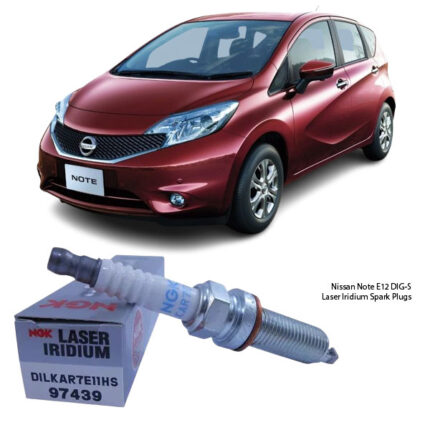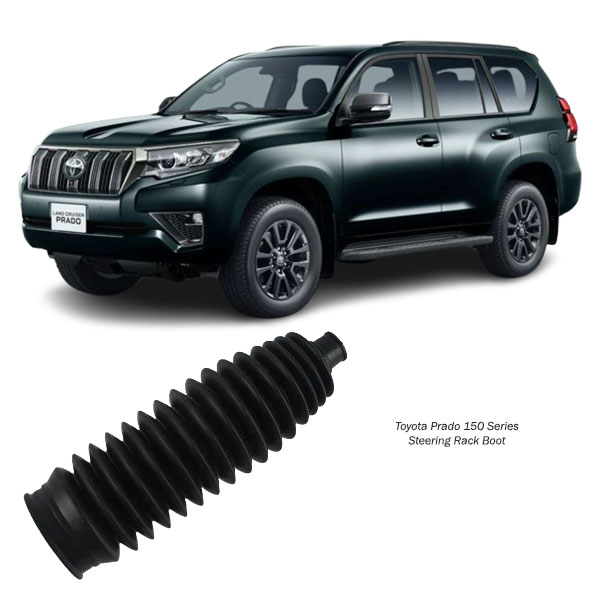-10%
Get Toyota Landcruiser Prado 150 Series Steering Rack Boot 45535-69025 in Kenya
The steering rack boot, also known as the steering rack gaiter or bellows boot, is a crucial part of your vehicle’s steering system. While it might seem like a small and insignificant rubber cover, its role is essential in protecting the steering rack and tie rod ends from dirt, debris, and moisture.
A damaged or worn-out steering rack boot can lead to steering issues, premature wear of steering components, and even costly repairs. In this guide, we will explore the purpose of a steering rack boot, its function, signs of failure, replacement process, maintenance tips, and more.
What Is a Steering Rack Boot? 🤔
A steering rack boot is a flexible, accordion-shaped rubber or plastic cover that encloses the steering rack’s inner tie rod ends. It acts as a protective barrier against contaminants such as:
🛑 Dust & Dirt – Prevents buildup that can cause wear.
💦 Water & Moisture – Stops corrosion and rust.
🛠️ Debris & Road Grime – Avoids mechanical damage.
🛢️ Grease Containment – Keeps lubrication inside the joint.
Without a properly functioning steering rack boot, the steering rack and tie rods are exposed to harsh road conditions, which can lead to steering failure and costly repairs.
How Does a Steering Rack Boot Work? ⚙️
The steering system relies on smooth and precise movement to provide accurate control of the vehicle. The steering rack boot plays a role in ensuring this by:
1️⃣ Sealing the Inner Tie Rods – Preventing dirt and moisture from entering the rack.
2️⃣ Maintaining Lubrication – Keeping grease inside the boot for smooth operation.
3️⃣ Expanding and Contracting – Allowing free movement of the steering rack while staying sealed.
4️⃣ Absorbing Small Vibrations – Helping reduce strain on steering components.
When you turn the steering wheel, the rack and pinion mechanism moves the tie rods, which in turn move the wheels. The boot flexes with this movement while keeping contaminants out.
Why Is the Steering Rack Boot Important? 🚘
A damaged or missing steering rack boot can cause serious problems, such as:
❌ Steering Rack Damage – Exposure to dirt and debris leads to internal wear.
❌ Premature Tie Rod Wear – Lack of lubrication increases friction and wear.
❌ Grease Leaks – Loss of lubrication causes metal-on-metal grinding.
❌ Steering Stiffness or Play – Leads to poor handling and unsafe driving.
❌ Increased Repair Costs – Replacing a steering rack is expensive compared to a simple boot replacement.
By maintaining a good-quality steering rack boot, you ensure smooth steering performance and a longer lifespan for your steering components.
Signs of a Worn or Damaged Steering Rack Boot 🚨
Over time, steering rack boots wear out due to heat, road debris, and aging rubber. Here are some common signs that indicate you need a replacement:
🛑 Cracked or Torn Boot – Visible damage allows contaminants to enter.
💦 Grease Leaking – Grease escaping from the boot signals wear.
🔧 Steering Feels Loose or Unstable – Inner tie rods may be exposed to damage.
🚗 Strange Noises When Turning – Clicking or grinding sounds may mean contamination inside the rack.
🔴 Steering Stiffness – Affected tie rods can cause difficulty in steering.
If you notice any of these symptoms, replacing the steering rack boot immediately can prevent expensive repairs.
What Causes Steering Rack Boot Damage? ❓
Several factors contribute to the wear and tear of a steering rack boot:
🔹 Age & Wear – Rubber deteriorates over time due to heat and exposure.
🔹 Road Debris & Rocks – Can puncture or tear the boot.
🔹 Oil & Chemical Exposure – Can weaken the rubber material.
🔹 Improper Installation – Can cause premature failure.
🔹 Extreme Weather Conditions – Heat, cold, and moisture affect durability.
To extend the lifespan of your steering rack boots, regularly inspect them for cracks, leaks, or other signs of damage.
How to Replace a Steering Rack Boot – Step-by-Step Guide 🛠️
Replacing a steering rack boot is a moderate difficulty task that requires some mechanical knowledge.
Tools & Materials Needed 🔧
✔️ New steering rack boot (OEM or aftermarket)
✔️ Jack & jack stands
✔️ Wrenches & sockets
✔️ Tie rod puller
✔️ Grease for lubrication
✔️ Zip ties or clamps for securing the boot
Replacement Process 🔩
1️⃣ Lift the Vehicle – Secure it with jack stands for safety.
2️⃣ Remove the Front Wheel – To access the tie rod end.
3️⃣ Loosen the Tie Rod End – Use a wrench to loosen the nut.
4️⃣ Detach the Outer Tie Rod – Use a tie rod puller if necessary.
5️⃣ Remove the Old Steering Rack Boot – Cut zip ties or clamps and slide it off.
6️⃣ Clean & Lubricate the Rack – Wipe off dirt and apply fresh grease.
7️⃣ Install the New Boot – Slide it into place, ensuring a proper fit.
8️⃣ Secure with Clamps or Zip Ties – Tighten properly to prevent leaks.
9️⃣ Reinstall the Tie Rod End – Ensure proper alignment.
🔟 Check & Test Steering – Turn the wheel to ensure smooth movement.
💡 Tip: If you are unsure about DIY replacement, visit a trusted auto repair shop to get it done professionally.
OEM vs Aftermarket Steering Rack Boots 🏁
When choosing a replacement steering rack boot, you have two options:
🔹 OEM (Original Equipment Manufacturer)
✔️ Exact fit and high-quality materials
✔️ Matches factory specifications
✔️ More expensive but reliable
🔹 Aftermarket (Third-Party Brands)
✔️ Wide range of options
✔️ Available in different materials (rubber, polyurethane)
✔️ May not always fit perfectly
For Toyota Prado 120/150, Nissan Note, Wingroad, and Tiida, using an OEM steering rack boot ensures proper fitment and durability.
Maintenance Tips for Steering Rack Boots 🏎️
To extend the lifespan of your steering rack boots, follow these tips:
✅ Inspect Boots Every 10,000 km – Look for cracks, tears, or leaks.
✅ Keep the Steering System Clean – Avoid dirt buildup.
✅ Check for Leaks Around the Boot – Ensure grease remains sealed inside.
✅ Replace Immediately If Damaged – Avoid damage to steering components.
✅ Use High-Quality Boots – Cheap rubber boots wear out faster.
Proper maintenance ensures smooth steering and prevents costly steering rack repairs.
Frequently Asked Questions (FAQs) ❓
1️⃣ How long do steering rack boots last?
Typically, 50,000 – 100,000 km, depending on road conditions and maintenance.
2️⃣ Can I drive with a torn steering rack boot?
Yes, but it’s not recommended. A damaged boot exposes the rack to contaminants, leading to costly repairs.
3️⃣ How much does it cost to replace a steering rack boot?
The part itself is affordable ($20 – $50), but labor can cost $100 – $300 if done by a mechanic.
4️⃣ Do aftermarket polyurethane boots last longer?
Yes, polyurethane boots are more durable than standard rubber boots, especially for off-road use.
Final Thoughts 💭
The steering rack boot is a small but essential part of your vehicle’s steering system. Keeping it in good condition prevents steering issues, improves vehicle handling, and extends the life of your steering components.
Follow us on Facebook for more parts.



